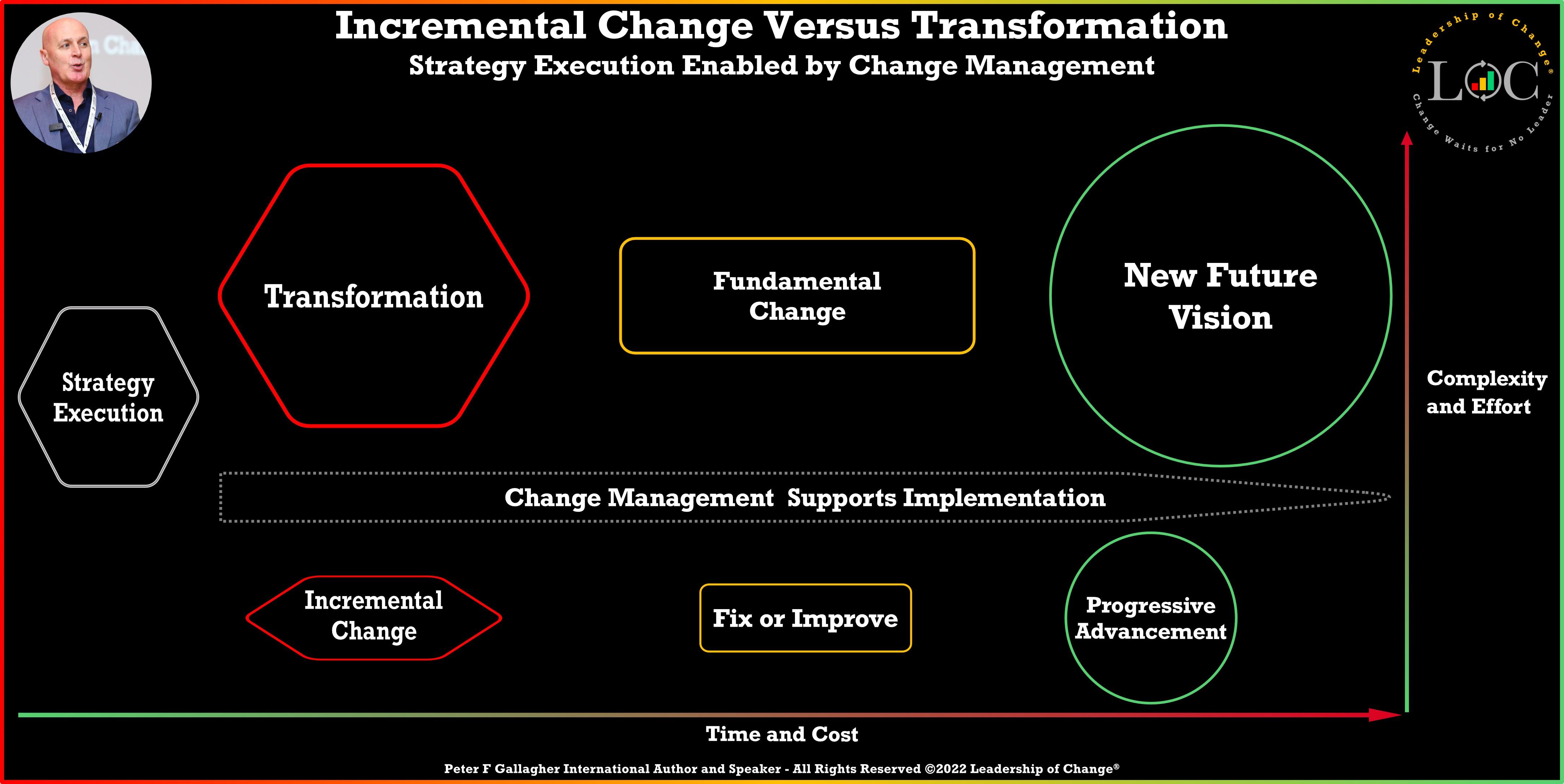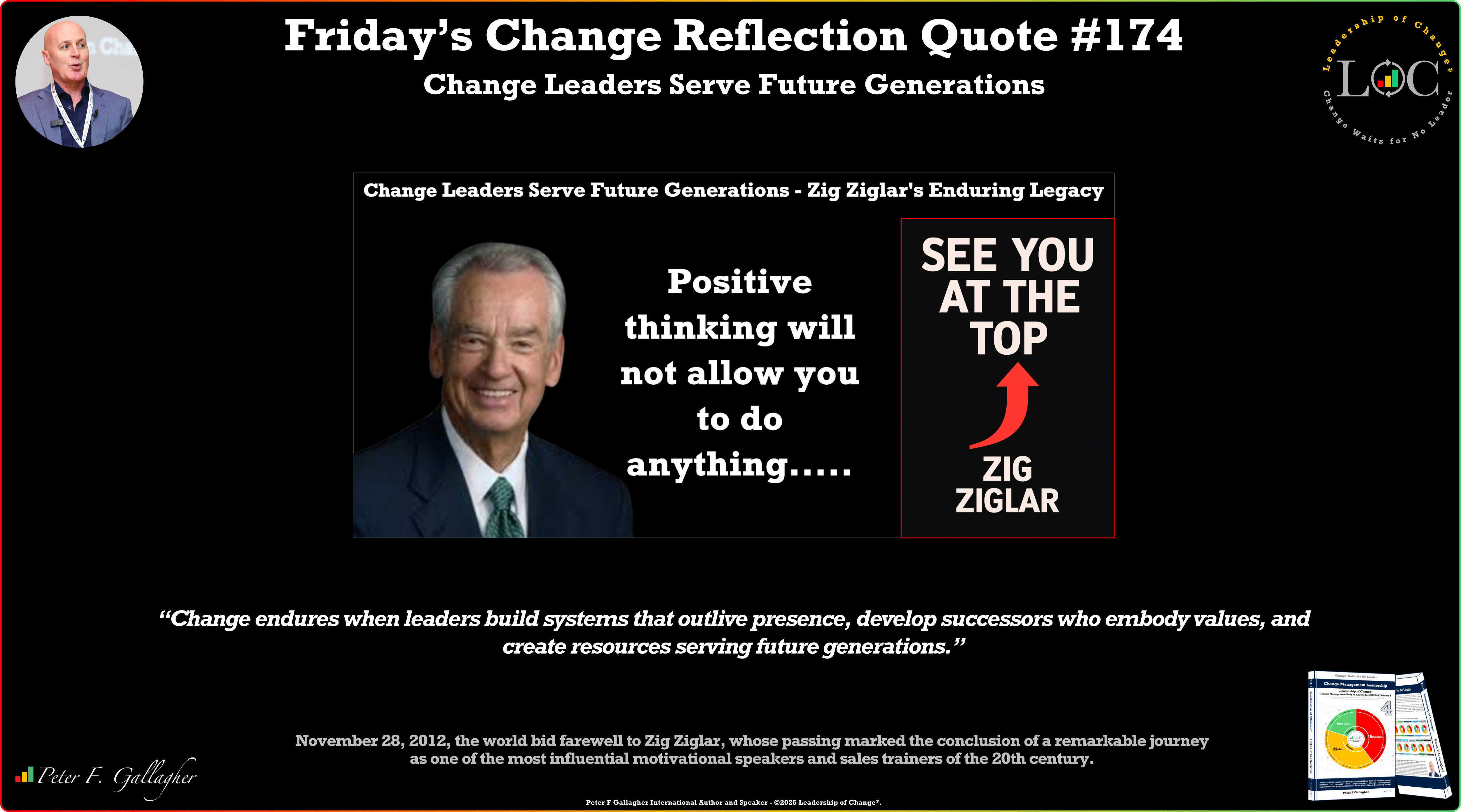May11

“An organisation’s ability to survive is determined by its capability to implement incremental change or to transform”
Winston Churchill is credited for the quotation, “to change is to improve, to improve often is to perfect.” An organisation’s ability to survive is determined by its capability to implement incremental change or to transform. The terms ‘change’ and ‘transformation’ are used interchangeably, and although both are about improving an organisation’s performance, they differ in terms of complexity and effort.
The Leadership of Change® defines that an organisation can improve performance in one of two ways:
It should be noted that these definitions will vary from organisation to organisation, as will the reasons for incremental change or transformation. However, for strategy execution to be successful, both incremental change and transformations will require change management support in terms of a change framework, models, processes and tools, including internal capability. These two change types are developed further below:
Incremental Change
Small strategic improvements or adjustments might include:
Transformation
Fundamental changes to the organisation might include:
“Any organisation or leader who thinks they can implement a high number of major transformation programme simultaneously probably does not understand the organisation’s capacity for change or their employee’s workload”
Other Considerations:
Organisation Change Capacity: An organisation only has so much capacity for change while normal day-to-day operations continue. Pushing too much change into the organisation will limit successful implementation. It could also put extra workload on the employees who may then resist the change or be unable to adopt the new way of working. There are typically four key organisational capacity components; normal day-to-day operations, unplanned work or rework, mandatory change capacity and finally strategic change capacity. A key question for organisation and leaders when implementing change is, ‘How much capacity for strategic change do we really have?’
Employee Workload:
Workload and organisational change capacity should be a key consideration when changing technology, systems, or processes. If new and additional work is created by the change, then leaders need to remove some of employee’s original workload to enable them to have enough capacity for new activities. Employees who complete our change history assessment© (CHA©) consistently score ‘workload’ very low, indicating that the organisation does not consider their workload when implementing change.
“Organisation change capacity and employee workload are ignored in change implementation, until they become the reason for failure”
This blog is based on my book: Change Management Handbook - Leadership of Change® Volume 3
Blog Source: Incremental Change Versus Transformation (peterfgallagher.com)
Peter consults, speaks, and writes on the Leadership of Change®. For further reading please visit our websites: https://www.a2b.consulting https://www.peterfgallagher.com Amazon.com: Peter F Gallagher: Books, Biography, Blog, Audiobooks, Kindle
Leadership of Change® Body of Knowledge Volumes: Change Management Body of Knowledge (CMBoK) Volumes 1, 2, 3, 4, 5, 6, 7, A, B, C, D & E available on both Amazon and Google Play:
~ Leadership of Change® Volume 1 - Change Management Fables
~ Leadership of Change® Volume 2 - Change Management Pocket Guide
~ Leadership of Change® Volume 3 - Change Management Handbook
~ Leadership of Change® Volume 4 - Change Management Leadership
~ Leadership of Change® Volume 5 - Change Management Adoption
~ Leadership of Change® Volume 6 - Change Management Behaviour
~ Leadership of Change® Volume 7 - Change Management Sponsorship
~ Leadership of Change® Volume A - Change Management Gamification - Leadership
~ Leadership of Change® Volume B - Change Management Gamification - Adoption
Coming soon:
~ Leadership of Change® Volume C - Change Management Gamification - Behaviour
~ Leadership of Change® Volume D - Change Management Gamification - Sponsorship
~ Leadership of Change® Volume E - Change Management Gamification - Leadership Teams
Keywords: Leadership, Change Management, Business Strategy
 How to Vet and Choose the Right Coach for a Leader
How to Vet and Choose the Right Coach for a Leader Grandad, what's a Supply Chain Planner
Grandad, what's a Supply Chain Planner Operational Speed Without Strategic Clarity Creates Chaos
Operational Speed Without Strategic Clarity Creates Chaos The AI Curriculum: A Library's Deep Dive into Artificial Intelligence
The AI Curriculum: A Library's Deep Dive into Artificial Intelligence Friday’s Change Reflection Quote - Leadership of Change - Change Leaders Serve Future Generations
Friday’s Change Reflection Quote - Leadership of Change - Change Leaders Serve Future Generations